Truth matters. Community matters. Your support makes both possible. LAist is one of the few places where news remains independent and free from political and corporate influence. Stand up for truth and for LAist. Make your year-end tax-deductible gift now.
How To Shop An Armenian Market Like A Pro
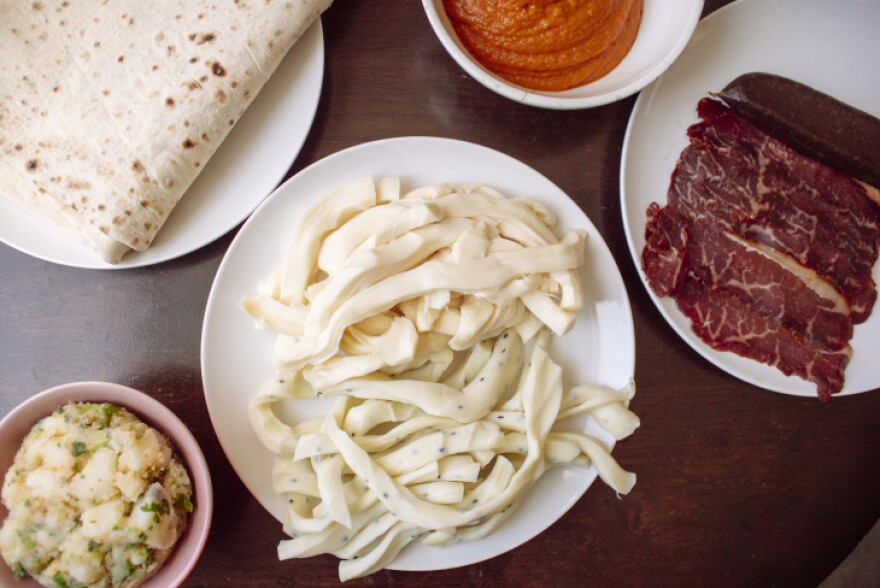
From Granada Hills to Montebello, the tastes of the Armenian diaspora are spread across L.A. County.
The ethnic group's ties to Southern California date to the early 20th century, when massacres and the Armenian Genocide swept through the Ottoman Empire. An estimated 1.5 million people were killed during the Genocide of 1915 and tens of thousands of survivors were forced to flee their homeland, most of which is located in present-day Turkey.
Decades later, Armenians displaced by World War II followed in those footsteps and migrated to the United States. Others, from across the Middle East and the Caucasus, came to Southern California in the mid and late 20th century, driven by upheaval — Lebanon's civil war, the Iranian Revolution, the collapse of the Soviet Union. Today, more than 214,000 Armenians live in Los Angeles County, the largest concentration of the ethnic group anywhere except Armenia.
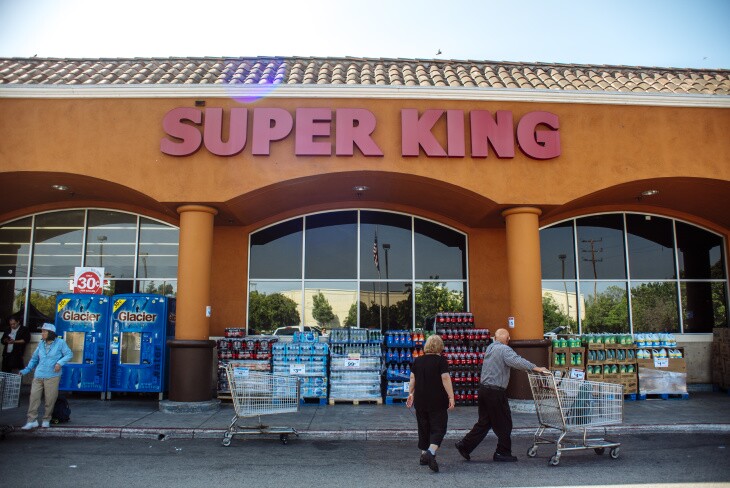
The result is an Armenian population that's vast and diverse. Need proof? Scan the aisles of one of SoCal's many mom-and-pop Armenian markets or visit international grocery chains like Jons and Super King, both of which were founded by Armenians. You'll find foods and spices emanating from the Caucasus and the Middle East. They include imported goods and items made in the U.S., all catering to the ethnic groups that call these regions home.
Armenians are indigenous to an area that borders or overlaps with the homes of several other ethnic groups including Greeks, Assyrians, Arabs and Persians. The post-Genocide diaspora led to flourishing Armenian communities in various Middle Eastern countries, extending a cultural exchange that has existed since antiquity into the present day.
The result? A cornucopia of Armenian products at local markets. Don't get overwhelmed by all the deliciousness. Take a few tips and shop these markets like a pro.

Lavash
There are a number of breads that turn up on Armenian tables. The most common and culturally significant is lavash. The flatbread was added to UNESCO's Representative List of the Intangible Cultural Heritage of Humanity in 2014. Its traditional production is a community effort where multiple generations of women prepare the dough while men build and tend the tonir (an oven similar to a tandoor). At L.A. markets, lavash often comes from local bakeries and can be found in a couple different forms. You might see long, soft sheets folded and bundled together in bags or you might spot large, dry pieces packaged together. The soft kind is better for wrap-style sandwiches but the dry lavash is good with dips and will soften if you drizzle water on it.
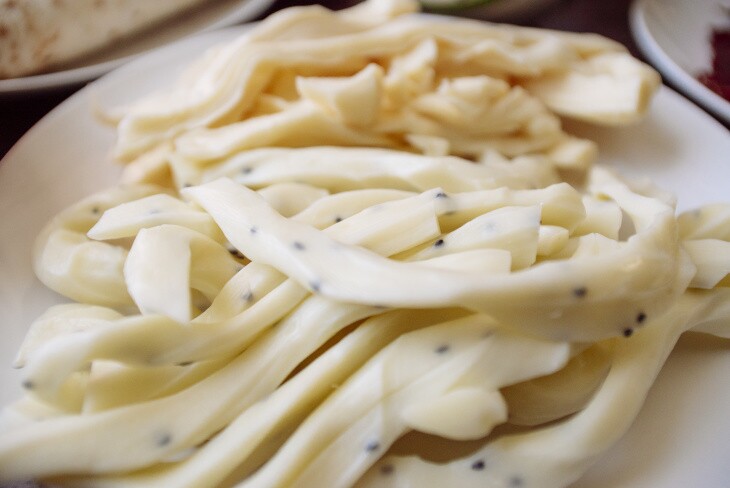
String Cheese and Lori Cheese
Armenians love their string cheese. In Armenian cuisine, it's often part of the mezze (appetizer) spread. The cheese, different from typical American, mozzarella-based string cheese, can come with or without caraway seeds, and most Armenian markets carry a few different brands. My favorite is from Karoun because the braided chunks can be unwound into thicker pieces that work well in wraps. Founded in L.A. by an Armenian family, the company produces their cheese at a plant in Turlock.
Lori cheese, which is less famous in the U.S., is a pale, yellow cheese named for the Armenian province where it originates. It may look like havarti but it tastes much different. Lori cheese has a light saltiness that kicks in after your first bite. You can nibble on it plain but it also pairs well with lavash and fresh herbs such as parsley or dill. It's not as ubiquitous as string cheese, but Lori cheese is worth seeking out. You probably won't find it pre-packaged in the dairy section. Whether you're at a large store, like Super King, or a small shop, like Hye Market, look for it at the deli counter.
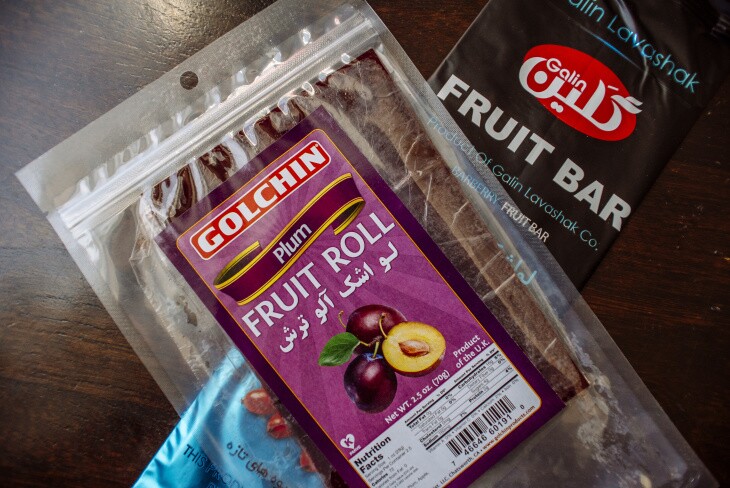
Fruit Leather
The strips of fruit leather (aka fruit rolls) you'll find in Armenian markets are nothing like the Fruit Roll-Ups peddled to American children. These are thick pastes and rolls that are often too big to stick into a kid's lunchbox. Also, they're not nearly as sweet. One of my favorites is labeled Dried Apricot Paste and wrapped in orange cellophane. It's made in Syria but often found in smaller, L.A.-area Armenian markets like Garo's Basturma in Pasadena. There are also fruit rolls stuffed with walnuts. U.S.-based company Oshakan calls their treat soujukh. These vegan-friendly, sausage-shaped rolls made with grape molasses are often found near the register at spots like Armen Market in Glendale.

Tahn
Yogurt drinks are common in the Middle East, the Caucasus and the Indian subcontinent. Armenians call the drink tahn. It's typically plain yogurt maybe with a sprig of mint. It's definitely an acquired taste and I'm not a huge fan but plenty of people are — enough that bottles of tahn are a common sight, either in the everything-yogurt-related section at big markets or next to soft drinks in the refrigerated cases at smaller ones. You'll typically find small bottles of plain yogurt drinks. Karoun also makes a mint-flavored one that turns up at some spots.
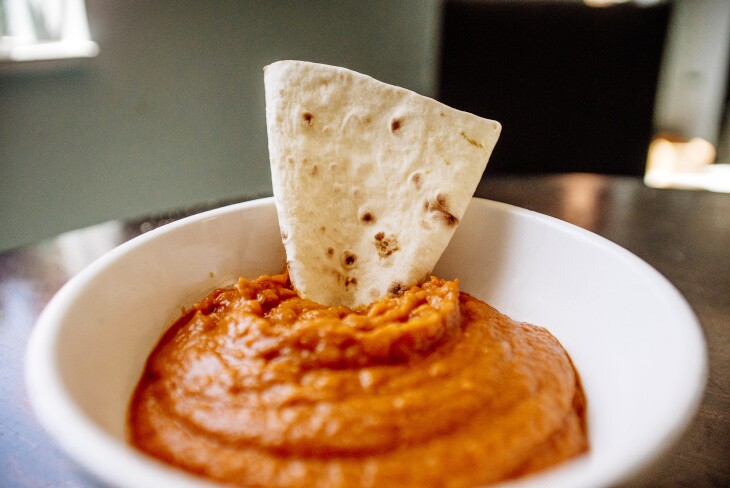
Eggplant Caviar
Don't be confused by jars labeled "eggplant caviar." This is a plant-based spread, popular with Russians and Armenians. Like babaganoush, it's derived from eggplant and works well as a dip. The mix of vegetables in eggplant caviar usually features red peppers, which gives it a red tinge. The spread can be spicy, so check the label.

Nazook and Gata
I could write a separate list focusing solely on Armenian cakes, cookies and pastries but I'll stick to two of the most beloved and easy-to-find desserts. Nazook is a rolled pastry, similar in size to a cookie, with a filling that often includes walnuts. Gata comes in a few different forms. Sometimes, it's a rolled pastry with or without filling that is indistinguishable from nazook. Other times, gata manifests in a larger, oval or round form that can be broken up and shared at the table. Neither is exceptionally sweet and both go well with coffee.

Armenian Potato Salad
One of my all time Super King favorites is Armenian potato salad. The most obvious difference between this picnic-friendly side dish and its American cousin is the lack of mayonnaise. With olive oil as the base for the dressing, the Armenian version focuses on the herbs and spices. At the Super King in Glassell Park, you'll find this in a blink-and-you'll-miss-it section of prepared foods located near the bakery. The tubs are small (and inexpensive) but the taste is big and a single tub is enough for multiple meals for two people.
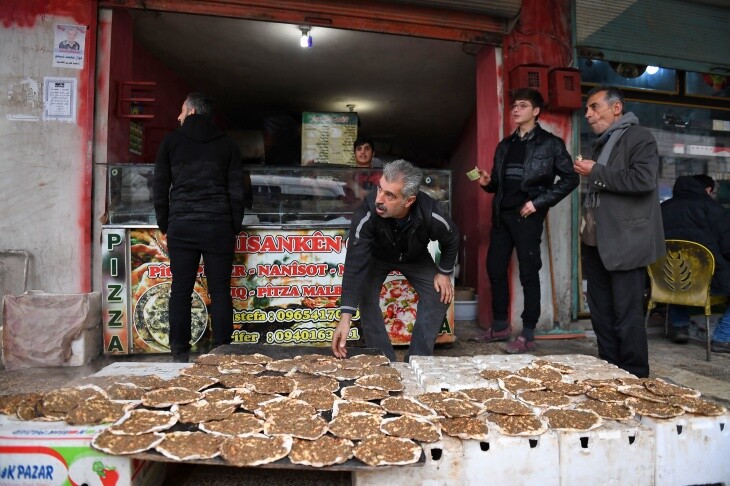
Lahmajune
It's sometimes called Armenian pizza but the only similarity between lahmajune (also spelled lahmajoun) and the beloved Italian pie is the basic concept of layering stuff onto dough. Lahmajune relies on a thin dough about the size of a tortilla. It's topped with ground beef or lamb and a mixture of spices. Avo's Bakery is the Burbank-based brand that you'll find in many markets. The company also makes a vegetarian version of the snack.
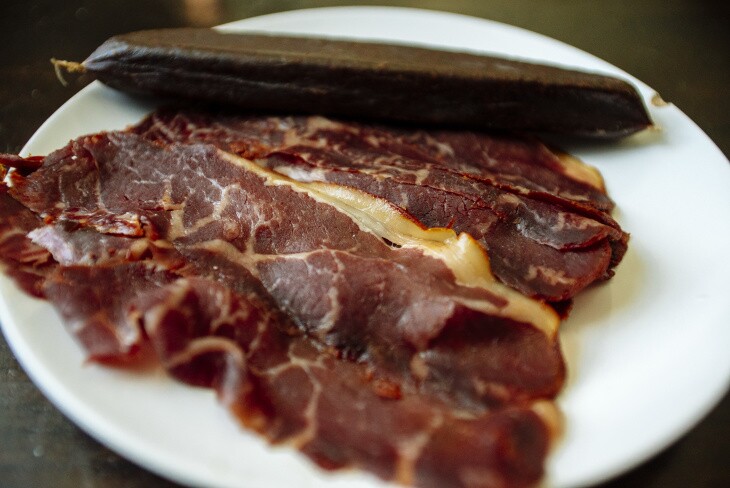
Basturma
A cured meat known for its intense garlic-and-spice smell, basturma is an Armenian favorite. It can be eaten a few different ways. Sometimes, you'll find it served as an appetizer alongside lavash and string cheese. At breakfast, it's incorporated into egg dishes. Larger groceries like Super King and Jons tend to have basturma in the deli section. You'll also find it at many smaller Armenian grocers. Garo's Basturma in Pasadena is famous for its housemade version. On a recent trip to the shop, almost all of the customers were ordering a batch. I prefer a lean cut, which I brought to my mother's house for Easter dinner, and it earned the seal of approval.

Soujouk
Like basturma, soujouk is a dried sausage that can be served as a flavorful counterpoint to egg dishes or as the star of a sandwich. Sahag's Basturma, a small market in East Hollywood, serves a delicious soujouk sandwich. The sausage is sliced and pressed inside a roll with minimal embellishments to enhance the spiciness of the meat.







